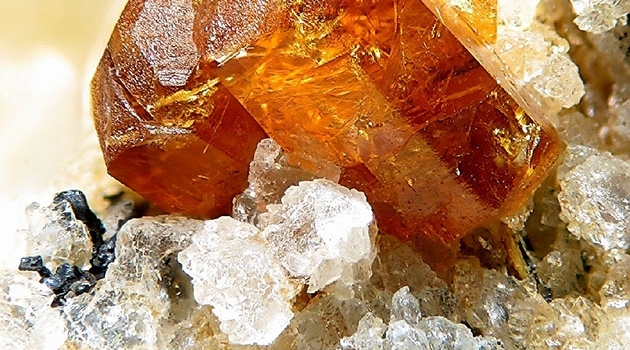How rare earth element (REE)-rich deposits in central Sweden formed
Much of our modern technology relies on the use of rare earth elements (REEs), and a key to finding more of them is to understand the processes that concentrate them in the Earth’s crust. In the ancient Bergslagen ore province of central Sweden lies a zone of ‘Bastnäs-type’ rare earth element deposits, and in a new study, scientists from Uppsala University and the Geological Survey of Sweden (SGU) show how these deposits originally formed.
The increasing demand for REEs in a wide range of modern high-tech applications, including applications vital to achieving ‘fossil-free’ transportation and energy production, has triggered a worldwide effort to discover new sources of these critical metals and therefore also a need to better understand how they formed. The ‘Bastnäs-type’ REE deposits in the Bergslagen ore province in south central Sweden were the first hard-rock ores ever to be mined for REEs and played a key role in the original discovery of several rare earth elements (including cerium and lanthanum) and REE minerals (such as the mineral bastnäsite; see photo). These Palaeoproterozoic, skarn-hosted magnetite-REE deposits represent a large-scale (>100 km) feature of high-grade REE concentrations, the ‘REE line’ in Bergslagen, south central Sweden. An improved understanding of their origin could help to guide exploration for this type of REE mineralisation here and elsewhere to secure the future supply of these critical commodities.
To unravel the formation of ‘Bastnäs-type’ REE deposits, robust constraints on the nature of ore-forming processes and fluids were needed. To address this, a research team from Uppsala University, the Geological Survey of Sweden (SGU) and the University of Cape Town collected mineral oxygen and carbon isotope data from ten of the classic central Swedish ‘Bastnäs-type’ deposits to assess their mode of origin. The results have now been published in the Nature research journal Scientific Reports.
The new isotope data allowed the team to perform numerical models that, combined with existing geological observations, imply an origin in a sub-seafloor, shallow-marine back-arc setting where high-temperature magmatic fluids reacted with pre-existing limestone layers. The drastic changes in chemical environment experienced by the fluids during their interaction with the limestone led to localised skarn formation and magnetite-REE mineral precipitation. These results advance the long-standing debate on the origin of the ‘Bastnäs-type’ REE deposits and provide new insights into geological processes that have the potential to produce high-grade REE mineralisation.
The study has been supported by the Swedish Research Council (VR), the Geological Survey of Sweden (SGU) and Uppsala University (UU).
Publication:
Sahlström, F., Jonsson, E., Högdahl, K., Troll, V. R., Harris, C., Jolis, E. M. & Weis, F. (2019) Interaction between high-temperature magmatic fluids and limestone explains ‘Bastnäs-type’ REE deposits in central Sweden. Scientific Reports, DOI: 10.1038/s41598-019-49321-8
Linda Koffmar

